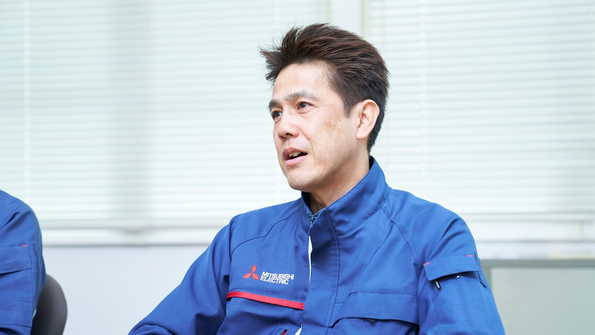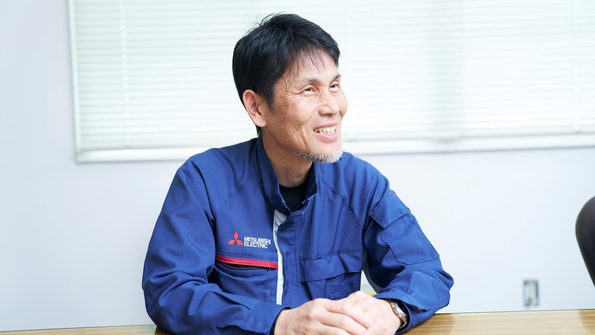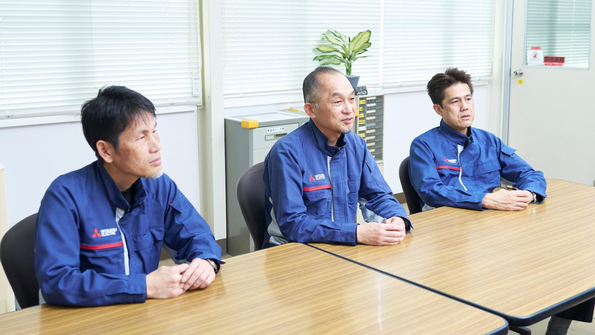Mitsubishi Electric Mobility Corporation chooses ProLeiS
This Japanese company uses ProLeiS at its Sanda plant in Japan to automate production management and optimize its entire die and mold manufacturing process.
The Mitsubishi Electric Corporation’s main areas of business include power generation, building and aerospace technology, and the development and manufacturing of semiconductors. As a tier 1 automotive supplier, the company specializes in the development and production of electronic components for vehicles and Advanced Driver Assistance Systems (ADAS).
Its portfolio also includes molds for series production of parts, which Mitsubishi Electric Mobility offers for every production phase from design to manufacturing – all from a single source. Until recently, employees from various departments used mostly manual workflows for important daily tasks in production, such as process management, scheduling or capacity alignment to avoid delivery delays and bottlenecks (“heijunka” in Japanese).
In their search for a suitable software system, the top item on their wish list was a manufacturing management system to automatically monitor, control, document and optimize the entire production process in die manufacturing from raw materials to the finished product.
Mr. Nakaya (department head) as well as Mr. Ueda and Mr. Ikeda (die makers) from the Die Manufacturing Department at Mitsubishi Electric Mobility Corporation spoke with Marubeni Information Systems (MSYS), Tebis’s Japanese distributor, about how they could automate their process management and capacity alignment with ProLeiS.
Mitsubishi Electric Mobility Corporation
Mr. Nakaya
Head of the Technology Management Unit, Advanced Technology Solution Division, Die Manufacturing Department 1

Mitsubishi Electric Mobility Corporation
Mr. Ueda
Die maker, Die Manufacturing Department 1, Advanced Technology Solution Division, Technology Management Unit

Mitsubishi Electric Mobility Corporation
Mr. Ikeda
Die maker, Die Manufacturing Department 1, Advanced Technology Solution Division, Technology Management Unit

・Automate capacity alignment in the individual process steps
・Automation of capacity alignment
■ ProLeiS implementation: background
Mitsubishi Electric Mobility manufactures a wide variety of dies for the automotive industry.
Its broad selection of products ranges from electronic components for automobiles to Advanced Driver Assistance Systems (ADAS) as well as parts and products for engine and vehicle control.
The Die Manufacturing 1 Department makes injection molding dies that are later used in the production of molded plastic parts. It also manufactures various components for engine control as well as dies for EGR (exhaust gas recirculation control) valves and solenoid valves to control scavenging air in exhaust systems, for example.
A focus on process management and capacity alignment

The Die Manufacturing 1 Department had long aimed to introduce a software system for production planning and control to improve manufacturing control in die and mold making.
“Our existing system had no automation capabilities. Our manufacturing control was a fully manual process, dependent on the system users’ judgment.” As Mr. Nakaya described it: “When we needed to integrate new orders into ongoing processes, we relied on individual employees’ personal assessments to decide whether we could do so without negatively impacting the delivery schedules for other dies.”
For this reason, Mitsubishi Electric Mobility wanted to replace its existing system with a manufacturing control software solution. The new system needed to be designed specifically for die and mold manufacturing, but it also had to take capacity alignment into account, since this plays a key role in ensuring process efficiency and on-time delivery.
■ Why the company chose ProLeiS
Two products in the final selection
Mr. Ikeda explained: “The system we’d been using couldn’t guarantee Windows 11 compatibility, so we started to look for alternative solutions. We visited trade shows and other events where vendors were presenting relevant software solutions and went about gathering information. After careful consideration, we narrowed our selection down to ProLeiS and another company’s product, and then we requested demos.”.
ProLeiS standard features meet the requirements
After seeing the demos for both software solutions and having its experts compare the details, Mitsubishi Electric Mobility chose ProLeiS.

Mr. Ikeda explained the rationale behind the decision as follows: “Besides its attractively designed interface, ProLeiS impressed us as a flexible, expandable, and highly customizable system. For the automation of both process management and capacity alignment, ProLeiS meets our needs perfectly.”
The other solution did not offer many automation capabilities; many settings had to be handled manually, as did capacity alignment. The other system would also need to be adapted to the company’s specific environment. ProLeiS was the better choice for Mitsubishi Electric Mobility’s needs, because the required features come standard with the software.
And since ProLeiS offers enough user licenses, all the users can customize their own work environments, from basic on-site users to administrators. The other solution charged additional license costs based on the number of users, so budgetary constraints might force the system to run with a limited number of users.
■ ProLeiS introduction and effects
Implementation and commissioning
Once ProLeiS was chosen, the system server was installed in March 2024, and the implementation phase began. By October 2024, ProLeiS was fully operational.
Of course, before the system was fully ready for use, some concerns were raised.
Mr. Ikeda stated: “Since ProLeiS is an overseas vendor’s product, we wondered about potential problems that might arise later on, especially if there were no reliable dealer to handle the communication. But Marubeni Information System (MSYS) was willing to facilitate and provide support, so we put our trust in them and started the implementation process.” Marubeni Information Systems is Tebis’s exclusive distributor in the Japanese market.
Direct communication with Tebis AG, the vendor of ProLeiS, posed a problem for Mitsubishi Electric Mobility.
Mr. Ikeda recalled: “We generally communicated with Tebis through MSYS, but we occasionally worried about whether our requests and questions were coming through correctly. We were the first Japanese company to adopt the ProLeiS system. We were provided with all the documentation, such as manuals and instructions in Japanese, but some things remained unclear, which required repeated follow-up questions. We always let MSYS handle these and had regular meetings with them.”
Understanding technical terms and industry jargon was a challenge, as Mr. Ueda explained: “We were able to communicate in words, but we realized we had slightly different interpretations of certain terms, so we had to spend a lot of time at the beginning to make sure we were all on the same page. The problem lay in industry-specific and company-specific language quirks, but these became less and less of an issue over time.”
Further uses of ProLeiS

During the ProLeiS adoption process, Mitsubishi Electric Mobility and MSYS worked together to gradually resolve any issues that arose until they reached the point where the software system was fully functional and ready for use.
Mr. Ueda explained the impact of adopting the system: “I can see the effect that adopting the system has had on process management and capacity alignment. We’ve only been using the software for a few months, so we aren’t familiar with all aspects of how it works yet, but we’re confident this will sort itself out over time. Capacity alignment was one of the most pressing problems we needed to solve, and it’s now working as we had envisioned.”
Mr. Ueda identified further possible applications: “So far, capacity alignment is going well, but we still risk missing delivery deadlines during peak season. We want to proactively simulate capacity bottlenecks and options to compensate for them.”
Outlook
How ProLeiS will be used in the future
In addition to automated process management, ProLeiS offers extensive features to help die and mold manufacturers work more efficiently. Mitsubishi Electric Mobility primarily uses ProLeiS for process management and capacity alignment in individual process steps. In the future, the company would like to deploy the software system for other applications.
Mr. Nakaya explained his ideas for using ProLeiS in other applications: “We’re currently only using ProLeiS for our on-site manufacturing, but in the future, we want to use the software in additional ways to help us work more efficiently in upstream and downstream processes. For example, it might be possible to use the software in the design phase, or in other applications like purchasing, inventory management, logistics, quality management, or post-production cost management. For example, our milling machines signal when a job is complete, and ProLeiS could automatically log the machine’s actual run time. Collecting this data would let us optimize machine utilization and manufacturing planning. We’d also like to use ProLeiS for central management of the orders we place with partner companies. At present, we manage the orders we place with our partner companies separately using a redundant or even threefold system, but we think this could be handled more efficiently with ProLeiS.”
Company expectations from MSYS

ProLeiS offers extensive customizable features, and the software has a modular structure that can be expanded as needed. This makes it an extremely valuable system solution for production management in die and mold manufacturing.
On the future of ProLeiS, Mr. Ikeda has this to say: “Once ProLeiS has more users, we’ll be able to exchange ideas with them, learn how to use the software better, and find out about use cases that we wouldn’t have thought of on our own. I think such an opportunity for exchanging ideas will be very beneficial for us. We also hope Tebis will implement new features as other companies request them – and that will improve how the system works at our company as well. We’d like to see other Japanese companies adopting ProLeiS and benefiting from its practical features.”


